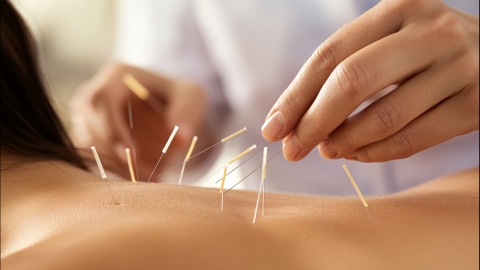What methods does Traditional Chinese Medicine use to treat osteoporosis?
Traditional Chinese Medicine (TCM) treats osteoporosis through various methods, including syndrome differentiation for herbal medication, acupuncture regulation, moxibustion for warming and promoting circulation, dietary therapy with medicinal foods, and exercise practices. A detailed analysis is as follows:

1. Syndrome Differentiation and Herbal Medication: TCM believes that osteoporosis is closely related to kidney deficiency, spleen deficiency, and blood stasis, requiring treatment based on individual patterns. For example, kidney deficiency is treated with formulas that tonify the kidneys and strengthen the bones; spleen deficiency is addressed with remedies that strengthen the spleen and boost qi; and blood stasis is managed with formulas that invigorate blood circulation and resolve stasis. By regulating organ functions and replenishing qi and blood, these treatments improve nutrient supply to the bones and enhance bone density.
2. Acupuncture Regulation: Based on the patient’s constitution and symptoms, specific acupoints such as Shenshu (BL23), Mingmen (GV4), Zusanli (ST36), and Dazhu (BL11) are selected for needle insertion. Acupuncture helps unblock meridians, regulate qi and blood, and stimulate acupoints to activate organ functions—particularly enhancing the kidney's ability to store essence and generate marrow, thereby nourishing the bones and alleviating symptoms of osteoporosis.
3. Moxibustion for Warming and Circulation: Moxibustion has the effect of warming the meridians, dispelling cold, tonifying the kidneys, and reinforcing yang. Commonly used points include Guanyuan (CV4), Qihai (CV6), Shenshu (BL23), and Sanyinjiao (SP6). The thermal stimulation warms the internal organs, replenishes yang energy, improves internal cold-deficiency conditions, promotes the circulation of qi and blood, relieves bone pain, and supports increased bone strength.
4. Dietary and Medicinal Food Support: Guided by TCM nutritional principles, foods known for their kidney-tonifying, bone-strengthening, spleen-nourishing, and qi-boosting properties—such as black sesame seeds, walnuts, goji berries, yam, and black beans—are recommended. Incorporating these ingredients into daily meals helps improve overall constitution and provides nutritional support for bone health.
5. Exercise and Qigong Practice: Patients are guided to practice suitable traditional Chinese exercises such as Baduanjin (Eight Pieces of Brocade), Tai Chi, and Yijinjing (Muscle/Tendon Changing Classic). These gentle exercises slowly stretch muscles and bones, promote systemic circulation of qi and blood, strengthen muscles, and help protect the skeletal system.
During treatment, regular monitoring of bone density is necessary, and treatment plans should be adjusted according to disease progression. Blind use of tonic herbal medicines should be avoided, and all herbal treatments must be administered under the guidance of qualified TCM practitioners based on proper pattern differentiation.








